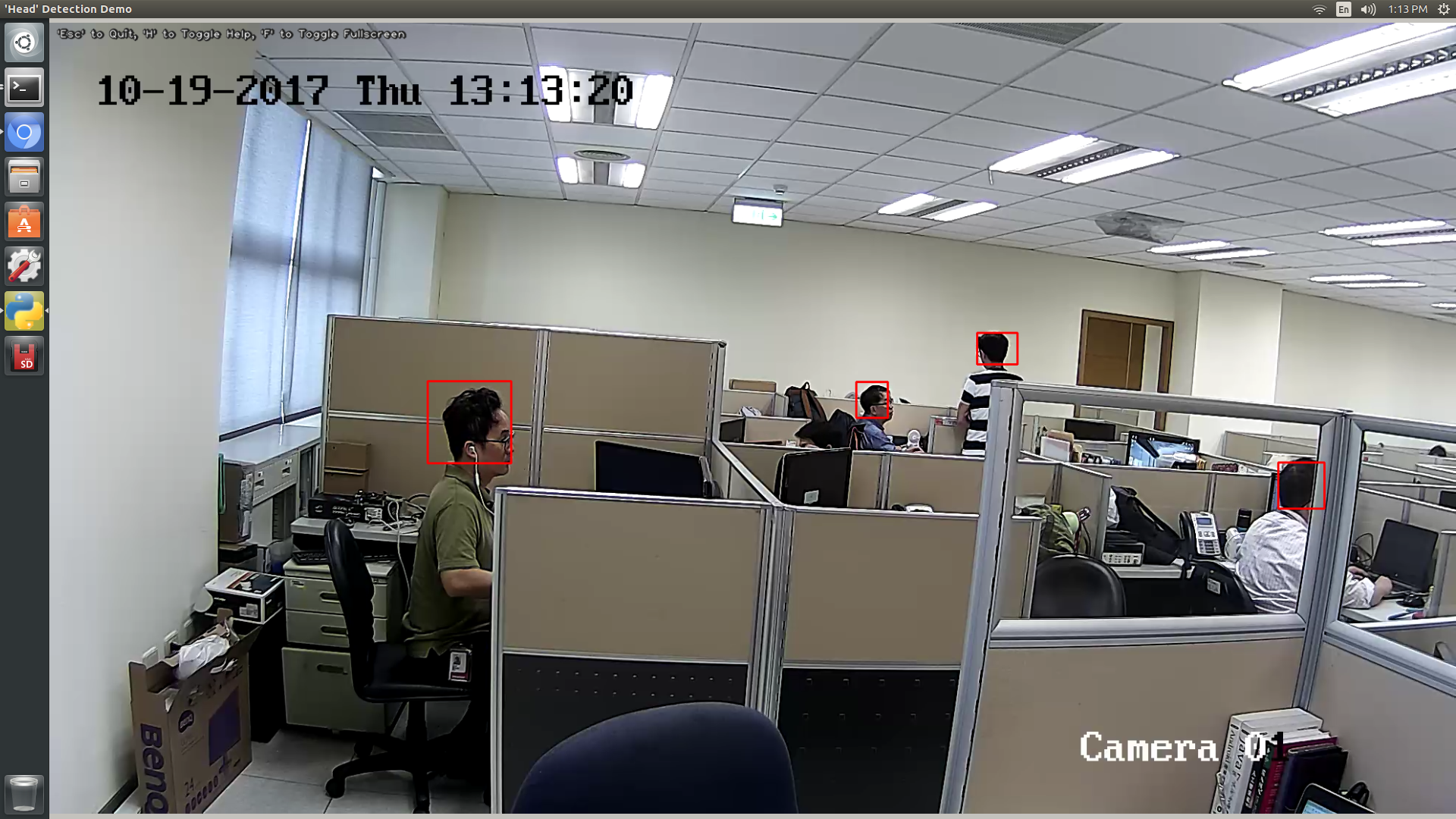https://jkjung-avt.github.io/tx2-camera-with-python/
1 准备条件
- 需要在 Jetson TX2 上安装 GStreamer 支持的 python和 OpenCV(opencv-3.4.0方法)
- 如果你是用 IP CAM, 你必须构建好,并且知道它的RTSP URI, 比如. rtsp://admin:XXXXX@192.168.1.64:554.
- 如果你是用 USB 网络摄像头(I 使用的是罗技 C920),这个 USB 摄像头通常安装在 /dev/video1, 因为 Jetson 板载摄像头已经占用了 /dev/video0.
- 安装 gstreamer1.0-plugins-bad ,这个包含了 h264parse 元素. 这是为了解码来自 IP 摄像头的 H.264 RTSP stream 所需要的
sudo apt-get install gstreamer1.0-plugins-bad
2 使用方法
2.1 OpenCV安装方法
参照buildOpenCVTX2的sh脚本进行手动编译。
注意 -DWITH_GSTREAMER=ON 要打开,如果要使用python3,则将-DBUILD_opencv_python3=OFF 改为 ON
2.2代码下载
在GitHub上下载tegra-cam.py 源代码 ,代码如下
# --------------------------------------------------------
# Camera sample code for Tegra X2/X1
#
# This program could capture and display video from
# IP CAM, USB webcam, or the Tegra onboard camera.
# Refer to the following blog post for how to set up
# and run the code:
# https://jkjung-avt.github.io/tx2-camera-with-python/
#
# Written by JK Jung <jkjung13@gmail.com>
# --------------------------------------------------------
import sys
import argparse
import subprocess
import cv2
WINDOW_NAME = 'CameraDemo'
def parse_args():
# Parse input arguments
desc = 'Capture and display live camera video on Jetson TX2/TX1'
parser = argparse.ArgumentParser(description=desc)
parser.add_argument('--rtsp', dest='use_rtsp',
help='use IP CAM (remember to also set --uri)',
action='store_true')
parser.add_argument('--uri', dest='rtsp_uri',
help='RTSP URI, e.g. rtsp://192.168.1.64:554',
default=None, type=str)
parser.add_argument('--latency', dest='rtsp_latency',
help='latency in ms for RTSP [200]',
default=200, type=int)
parser.add_argument('--usb', dest='use_usb',
help='use USB webcam (remember to also set --vid)',
action='store_true')
parser.add_argument('--vid', dest='video_dev',
help='device # of USB webcam (/dev/video?) [1]',
default=1, type=int)
parser.add_argument('--width', dest='image_width',
help='image width [1920]',
default=1920, type=int)
parser.add_argument('--height', dest='image_height',
help='image height [1080]',
default=1080, type=int)
args = parser.parse_args()
return args
def open_cam_rtsp(uri, width, height, latency):
gst_str = ('rtspsrc location={} latency={} ! '
'rtph264depay ! h264parse ! omxh264dec ! '
'nvvidconv ! '
'video/x-raw, width=(int){}, height=(int){}, '
'format=(string)BGRx ! '
'videoconvert ! appsink').format(uri, latency, width, height)
return cv2.VideoCapture(gst_str, cv2.CAP_GSTREAMER)
def open_cam_usb(dev, width, height):
# We want to set width and height here, otherwise we could just do:
# return cv2.VideoCapture(dev)
gst_str = ('v4l2src device=/dev/video{} ! '
'video/x-raw, width=(int){}, height=(int){} ! '
'videoconvert ! appsink').format(dev, width, height)
return cv2.VideoCapture(gst_str, cv2.CAP_GSTREAMER)
def open_cam_onboard(width, height):
gst_elements = str(subprocess.check_output('gst-inspect-1.0'))
if 'nvcamerasrc' in gst_elements:
# On versions of L4T prior to 28.1, add 'flip-method=2' into gst_str
gst_str = ('nvcamerasrc ! '
'video/x-raw(memory:NVMM), '
'width=(int)2592, height=(int)1458, '
'format=(string)I420, framerate=(fraction)30/1 ! '
'nvvidconv ! '
'video/x-raw, width=(int){}, height=(int){}, '
'format=(string)BGRx ! '
'videoconvert ! appsink').format(width, height)
elif 'nvarguscamerasrc' in gst_elements:
gst_str = ('nvarguscamerasrc ! '
'video/x-raw(memory:NVMM), '
'width=(int)1920, height=(int)1080, '
'format=(string)NV12, framerate=(fraction)30/1 ! '
'nvvidconv flip-method=2 ! '
'video/x-raw, width=(int){}, height=(int){}, '
'format=(string)BGRx ! '
'videoconvert ! appsink').format(width, height)
else:
raise RuntimeError('onboard camera source not found!')
return cv2.VideoCapture(gst_str, cv2.CAP_GSTREAMER)
def open_window(width, height):
cv2.namedWindow(WINDOW_NAME, cv2.WINDOW_NORMAL)
cv2.resizeWindow(WINDOW_NAME, width, height)
cv2.moveWindow(WINDOW_NAME, 0, 0)
cv2.setWindowTitle(WINDOW_NAME, 'Camera Demo for Jetson TX2/TX1')
def read_cam(cap):
show_help = True
full_scrn = False
help_text = '"Esc" to Quit, "H" for Help, "F" to Toggle Fullscreen'
font = cv2.FONT_HERSHEY_PLAIN
while True:
if cv2.getWindowProperty(WINDOW_NAME, 0) < 0:
# Check to see if the user has closed the window
# If yes, terminate the program
break
_, img = cap.read() # grab the next image frame from camera
if show_help:
cv2.putText(img, help_text, (11, 20), font,
1.0, (32, 32, 32), 4, cv2.LINE_AA)
cv2.putText(img, help_text, (10, 20), font,
1.0, (240, 240, 240), 1, cv2.LINE_AA)
cv2.imshow(WINDOW_NAME, img)
key = cv2.waitKey(10)
if key == 27: # ESC key: quit program
break
elif key == ord('H') or key == ord('h'): # toggle help message
show_help = not show_help
elif key == ord('F') or key == ord('f'): # toggle fullscreen
full_scrn = not full_scrn
if full_scrn:
cv2.setWindowProperty(WINDOW_NAME, cv2.WND_PROP_FULLSCREEN,
cv2.WINDOW_FULLSCREEN)
else:
cv2.setWindowProperty(WINDOW_NAME, cv2.WND_PROP_FULLSCREEN,
cv2.WINDOW_NORMAL)
def main():
args = parse_args()
print('Called with args:')
print(args)
print('OpenCV version: {}'.format(cv2.__version__))
if args.use_rtsp:
cap = open_cam_rtsp(args.rtsp_uri,
args.image_width,
args.image_height,
args.rtsp_latency)
elif args.use_usb:
cap = open_cam_usb(args.video_dev,
args.image_width,
args.image_height)
else: # by default, use the Jetson onboard camera
cap = open_cam_onboard(args.image_width,
args.image_height)
if not cap.isOpened():
sys.exit('Failed to open camera!')
open_window(args.image_width, args.image_height)
read_cam(cap)
cap.release()
cv2.destroyAllWindows()
if __name__ == '__main__':
main()
Reference:
- I developed my code based on this canny edge detector sample code.
- ACCELERATED GSTREAMER FOR TEGRA X2 USER GUIDE: Descriptions of nvcamerasrc, nvvidconv and omxh264dec could be found in this document.
How to run the Tegra camera sample code:
- Download the
tegra-cam.pysource code from my GitHubGist: https://gist.github.com/jkjung-avt/86b60a7723b97da19f7bfa3cb7d2690e - To capture and display video using the Jetson onboard camera, try the following. By default the camera resolution is set to 1920x1080 @ 30fps.
2.3 板载相机
$ python3 tegra-cam.py
- To use a USB webcam and set video resolution to 1280x720, try the following. The ‘–vid 1’ means using /dev/video1.
-
2.4 USB摄像头
$ python3 tegra-cam.py --usb --vid 1 --width 1280 --height 720
- To use an IP CAM, try the following command, while replacing the last argument with RTSP URI for you own IP CAM.
-
2.5 IP摄像头
python3 tegra-cam.py --rtsp --uri rtsp://admin:XXXXXX@192.168.1.64:554
Discussions:
The crux of this tegra-cam.py script lies in the GStreamer pipelines I use to call cv.VideoCapture(). In my experience, using nvvidconv to do image scaling and to convert color format to BGRx (note that OpenCV requires BGR as the final output) produces better results in terms of frame rate.
Here’s a screenshot of my Jetson TX2 running tegra-cam.py with a live IP CAM video feed. (I also hooked up a Faster R-CNN model to do human head detection and draw bounding boxes on the captured images here, but the main video capture/display code was the same.)

If you like this post or have any questions, feel free to leave a comment below. Otherwise be sure to also check out my next post How to Capture Camera Video and Do Caffe Inferencing with Python on Jetson TX2, in which I demonstrate how to feed live camera images into a Caffe pipeline for real-time inferencing.




